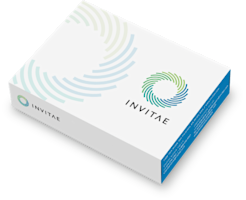
Invitae Cystinosis Test
Test code: 06172 •
Test description
The Invitae Cystinosis Test analyzes the CTNS gene; which is associated with cystinosis, or the accumulation of crystals from the amino acid cystine within multiple tissues of the body. This test is useful for the diagnosis of patients in whom cystinosis is suspected due to clinical symptoms or biochemical findings. Identification of disease-causing variants provides accurate risk assessment and carrier status of at-risk relatives.
Ordering information
Turnaround time:
10–21 calendar days (14 days on average)New York approved:
YesPreferred specimen:
3mL whole blood in a purple-top EDTA tube (K2EDTA or K3EDTA)Alternate specimens:
Saliva, buccal swab, and gDNA are also accepted.Learn more about specimen requirementsRequest a specimen collection kitClinical description and sensitivity
Clinical description:
Cystinosis is a lysosomal storage disorder caused by the inability to pump the amino acid cystine out of the lysosome. This leads progressive cystine accumulation, the formation of cystine crystals and cellular damage. There are three commonly recognized clinical types defined by age of onset and clinical presentation: nephropathic cystinosis, intermediate cystinosis, and non-nephropathic or ocular cystinosis.. The most common type, nephropathic cystinosis, typically presents around age 6 months with renal Fanconi syndrome. Clinical and laboratory findings typically include failure to thrive, vomiting, constipation, dehydration, polyuria, polydipsia, rickets, hypokalemia, metabolic acidosis, hypophosphatemia, hypocalcemia, and increased urinary excretion of electrolytes, minerals, glucose and amino acids. Without treatment using cystine depletion therapy, affected individuals progress to end-stage renal disease in childhood. Additionally, affected individuals typically develop cystine crystals in the cornea by 16 months of age. This later leads to photophobia and other ocular abnormalities by mid-childhood or adolescence. Additional complications can develop over time including hypothyroidism, primary hypogonadism in males, delayed puberty, impaired sweating, pancreatic insufficiency, hypopigmentation, coarsening of facial features, and myopathy. Intelligence is typically normal, however some individuals may have mild neurocognitive abnormalities such as deficits in visual spatial and visual memory skills, and mild motor deficits.
Treatment is available for cystinosis via cystine depletion therapies. Cysteamine bitartrate can prevent or delay onset of some of the systemic complications of cystinosis while cysteamine ophthalmic solution is used for the ocular manifestations. Renal transplant may be necessary for those with advanced renal disease. Life expectancy is variable and based on management, however for individuals treated early with cystine depletion therapy survival into the 6th decade of life or later is possible.
An estimated 5% of affected individuals have intermediate cystinosis, characterized by onset of symptoms in childhood or adolescence. Individuals with intermediate cystinosis typically have a milder form of renal Fanconi syndrome and slower progression of disease compared to those with infantile onset of symptoms. In rare cases adults can present with non-nephropathic cystinosis, which is characterized by isolated corneal cystine crystals and photophobia.
Assay information
Invitae is a College of American Pathologists (CAP)-accredited and Clinical Laboratory Improvement Amendments (CLIA)-certified clinical diagnostic laboratory performing full-gene sequencing and deletion/duplication analysis using next-generation sequencing technology (NGS).
Our sequence analysis covers clinically important regions of each gene, including coding exons and 10 to 20 base pairs of adjacent intronic sequence on either side of the coding exons in the transcript listed below, depending on the specific gene or test. In addition, the analysis covers select non-coding variants. Any variants that fall outside these regions are not analyzed. Any limitations in the analysis of these genes will be listed on the report. Contact client services with any questions.
Based on validation study results, this assay achieves >99% analytical sensitivity and specificity for single nucleotide variants, insertions and deletions <15bp in length, and exon-level deletions and duplications. Invitae's methods also detect insertions and deletions larger than 15bp but smaller than a full exon but sensitivity for these may be marginally reduced. Invitae’s deletion/duplication analysis determines copy number at a single exon resolution at virtually all targeted exons. However, in rare situations, single-exon copy number events may not be analyzed due to inherent sequence properties or isolated reduction in data quality. Certain types of variants, such as structural rearrangements (e.g. inversions, gene conversion events, translocations, etc.) or variants embedded in sequence with complex architecture (e.g. short tandem repeats or segmental duplications), may not be detected. Additionally, it may not be possible to fully resolve certain details about variants, such as mosaicism, phasing, or mapping ambiguity. Unless explicitly guaranteed, sequence changes in the promoter, non-coding exons, and other non-coding regions are not covered by this assay. Please consult the test definition on our website for details regarding regions or types of variants that are covered or excluded for this test. This report reflects the analysis of an extracted genomic DNA sample. In very rare cases, (circulating hematolymphoid neoplasm, bone marrow transplant, recent blood transfusion) the analyzed DNA may not represent the patient's constitutional genome.
You can customize this test by clicking genes to remove them.
Primary panel
Question about billing?
Find answers